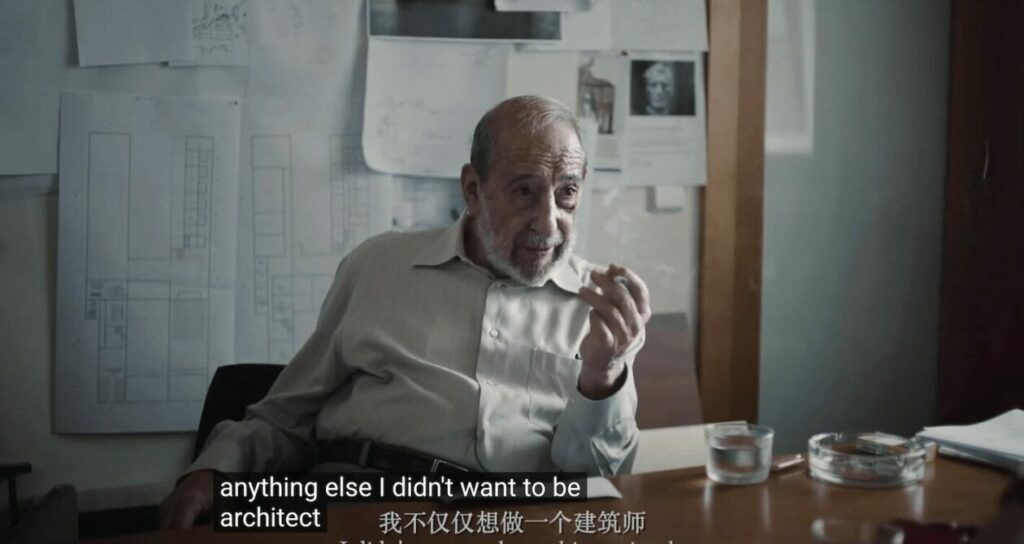We recently had the privilege of listening to a fascinating interview with the renowned Portuguese architect Alvaro Siza, offering profound insights into his illustrious career, distinctive design philosophy, and iconic projects. Siza, a true master of his craft, shared his perspectives on the architecture of Alvaro Siza as an art form, the intricate relationship between built spaces and nature, and the enduring relevance of his work.

From Sculptor to Architect: A Journey of Passion
Siza’s journey into architecture wasn’t a straightforward one. He initially harbored aspirations of becoming a sculptor, exploring diverse interests in his youth, from firefighting to opera singing [01:27]. It was during his time at the School of Arts in Porto, where he immersed himself in painting, sculpture, and architecture, that his profound interest in the latter truly blossomed [01:52]. For Siza, architecture is unequivocally an art form, a belief he passionately defends, stating that viewing it otherwise is merely “an excuse to accept things that have not quality” [00:27].
Throughout his career, Alvaro Siza has exemplified the principles behind the architecture of Alvaro Siza, pushing boundaries and challenging conventions, which continues to inspire both students and fellow architects.
Bornova House: Harmonizing Architecture with Nature
One of the projects Siza discussed was the Bornova House, nestled in a breathtaking landscape. He emphasized the crucial relationship between architecture and nature [02:31], recounting the challenging yet rewarding experience of winning the competition for the project despite its rocky terrain, a feat achieved alongside architect Tavora [03:07]. This project exemplifies his commitment to integrating structures seamlessly into their natural surroundings.
Modernism and the Art of Timelessness
Carlos Gatin, a fellow Portuguese architect who collaborates with Siza, describes Siza not as an architect with a rigid style, but rather one who works within the continuity of modernism [04:08]. Gatin highlights Siza’s focus on the inherent reality of a project and the coherence between volume and space, particularly his masterful use of light [04:40]. This approach contributes to the enduring quality of his designs.
The Window: A Microcosm of Architectural Thought
Siza eloquently articulated the profound significance of the window in architecture, declaring that “all the problems of architecture are concentrated in the item of window” [05:05]. He elaborated on how the meticulous placement and detailing of a window necessitate a deep understanding of both interior and exterior spaces [05:15], underscoring the intricate thought process behind seemingly simple design elements.
Evolving Church Design and International Horizons
The interview also touched upon Siza’s design of a church in a small town north of Porto. He shared how the challenging topography led to a unique two-floor design [06:13] and how significant shifts in liturgy over centuries have rendered older church models obsolete, influencing his decision to incorporate a large opening to the valley in his design [07:06].
Siza’s influence extends far beyond Portugal’s borders. He expressed his enjoyment in working internationally, citing projects in diverse locations such as Manhattan, China, Mexico, and Italy [07:59]. His experiences in China, which he first visited a decade ago for the B House Museum [08:34], revealed a “wish for quality” in the country’s architectural endeavors [09:10].
An Enduring Legacy
Gatin aptly summarized Siza’s enduring appeal, praising his open-mindedness, which keeps him “a young person in a sense” despite his age [10:11]. He further noted that Siza’s projects, even those dating back 65 years, remain remarkably relevant and “not old-fashioned,” truly embodying the concept of “timelessness” [10:25].
Alvaro Siza’s interview offers a compelling glimpse into the mind of a visionary architect whose work transcends fleeting trends, leaving an indelible mark on the landscape of modern architecture.